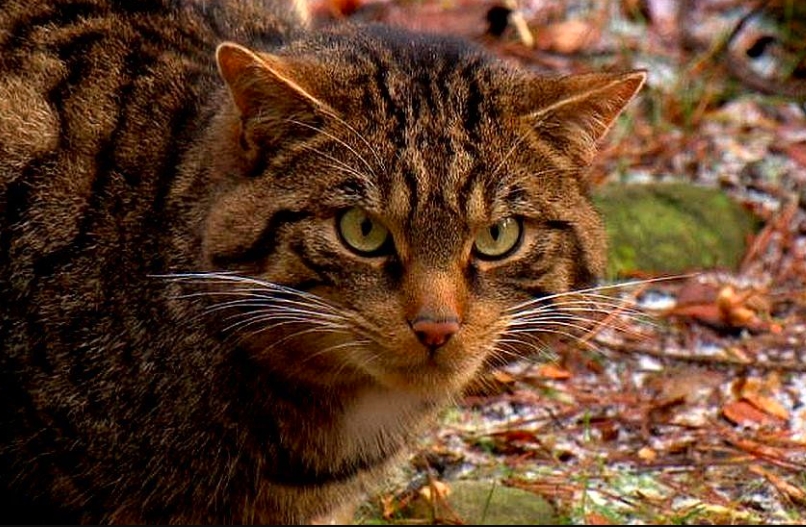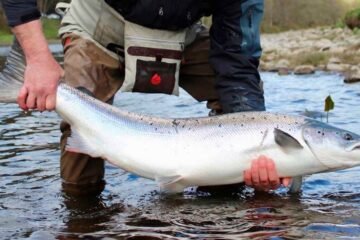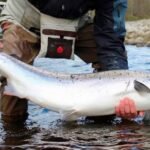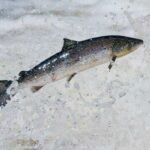A new hope for the ‘Highland Tiger’
The Scottish wildcat, also known as the ‘Highland Tiger’, is one of the most endangered mammals in the world. It is estimated that fewer than 100 individuals remain in the wild, mainly due to hybridisation with feral domestic cats, disease and habitat loss. However, a new project aims to reverse the decline of this iconic species by releasing captive-bred wildcats into the Cairngorms National Park, the UK’s largest and most biodiverse protected area.
The Saving Wildcats project, led by the Royal Zoological Society of Scotland (RZSS), began introducing the 22 cats to the park last week. It is the first in a series of trial releases at undisclosed locations in the park, which covers an area of 4,528 sq km (1,748 sq mi) in the Scottish Highlands. The project was approved under licence by NatureScot, the Scottish government’s nature agency, and is the first-ever conservation translocation of wildcats in Britain.
The wildcats were bred at the Highland Wildlife Park, near Aviemore, where they were kept in large enclosures that mimicked their natural habitat. They were also screened for genetic purity and health, and fitted with GPS-radio collars to monitor their movements and behaviour after release. The project plans to release about 60 wildcats over the next three years, with the ultimate goal of establishing a self-sustaining population in the wild.
A lifeline for the species
The Scottish wildcat is the only native cat species in Britain, and has been present since the end of the last ice age. It is closely related to the European wildcat, but has distinct features such as a thick striped coat, a bushy tail and a larger skull. It is also a fierce predator, capable of hunting rabbits, rodents, birds and even small deer.

However, the wildcat has faced many threats over the centuries, including persecution, habitat fragmentation and competition with invasive species. The most serious threat, however, is hybridisation with feral domestic cats, which dilutes the wildcat’s unique genetic identity and makes it more susceptible to diseases. According to a 2018 study, there is no longer a viable wildcat population in Scotland, and the species is functionally extinct in the wild.
The Saving Wildcats project hopes to change this bleak scenario by restoring the wildcat’s genetic diversity and resilience. The project is supported by a number of partners, including Cairngorms National Park Authority, Forestry and Land Scotland, RSPB Scotland and Wildland Limited. It is also part of a larger landscape conservation initiative called Cairngorms Connect, which aims to enhance habitat, species and ecological processes in the park over a 200-year vision.
A challenge for the future
The release of the captive-bred wildcats is not without challenges, both for the animals and the project. The wildcats will have to adapt to a new environment, find suitable prey and avoid predators such as foxes and eagles. They will also have to avoid contact with feral domestic cats, which could lead to further hybridisation or disease transmission. The project will monitor the wildcats closely and intervene if necessary, such as by providing supplementary food or veterinary care.
The project also faces the challenge of gaining the support and cooperation of the local community, especially farmers, landowners and cat owners. The project aims to raise awareness and understanding of the wildcat’s plight and importance, and to encourage responsible cat ownership, such as by neutering, vaccinating and microchipping domestic cats. The project also hopes to involve the community in the conservation efforts, such as by reporting sightings, volunteering or donating.
The Saving Wildcats project is a bold and ambitious attempt to save the Scottish wildcat from extinction. It is also a testament to the dedication and collaboration of various organisations and individuals who share a common vision for the future of this remarkable species. The project’s success will depend on many factors, but it offers a new hope for the ‘Highland Tiger’ and its role in the Scottish natural heritage.


















